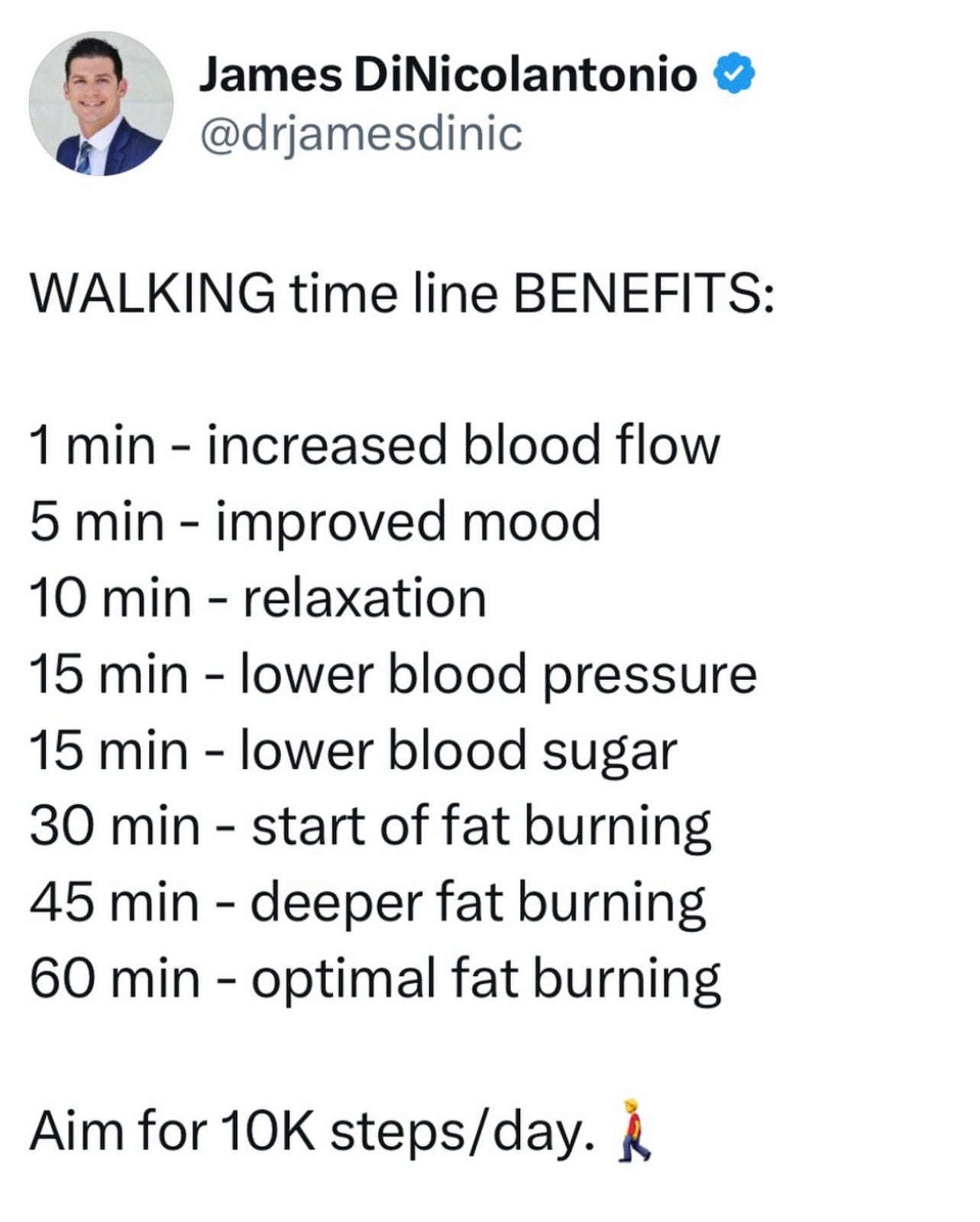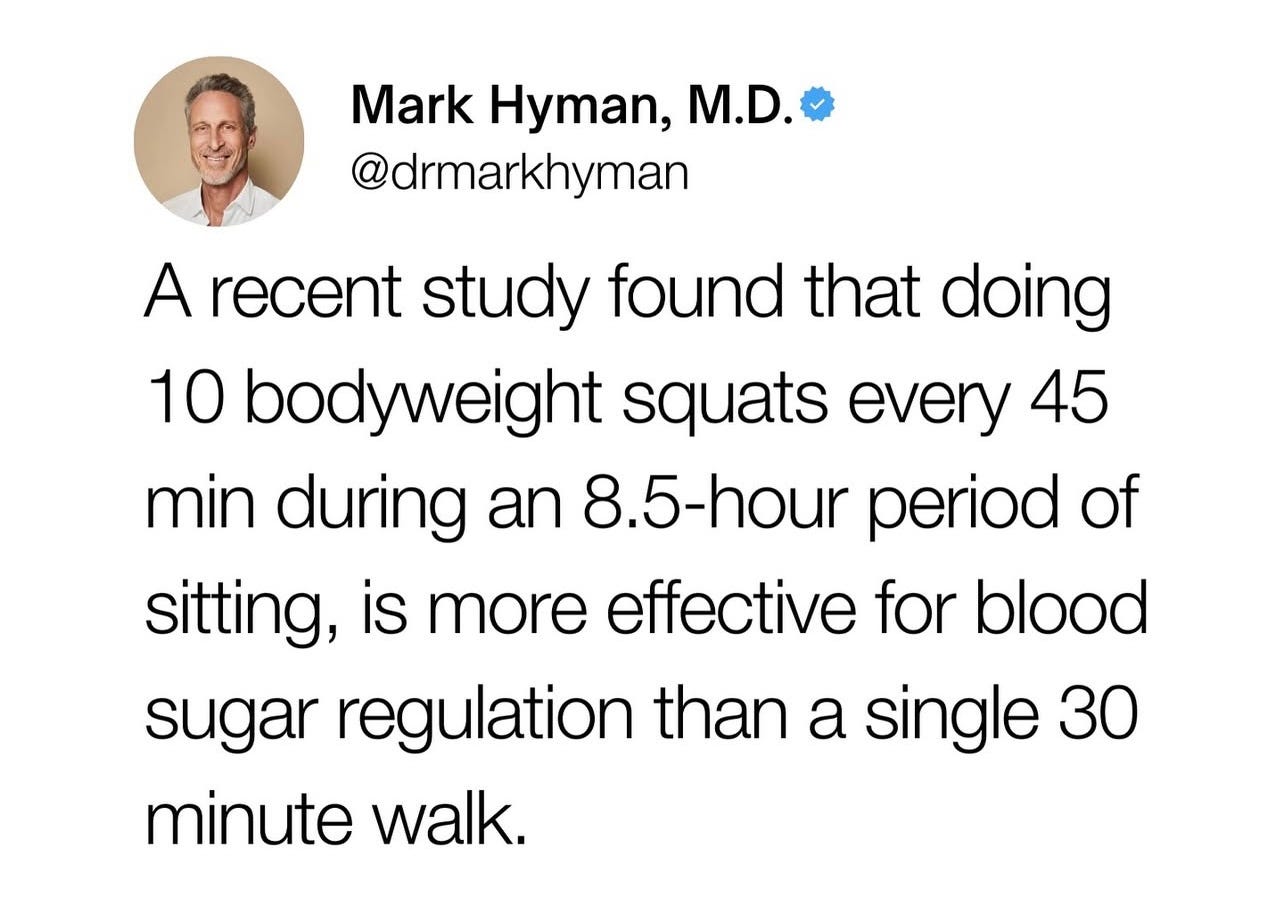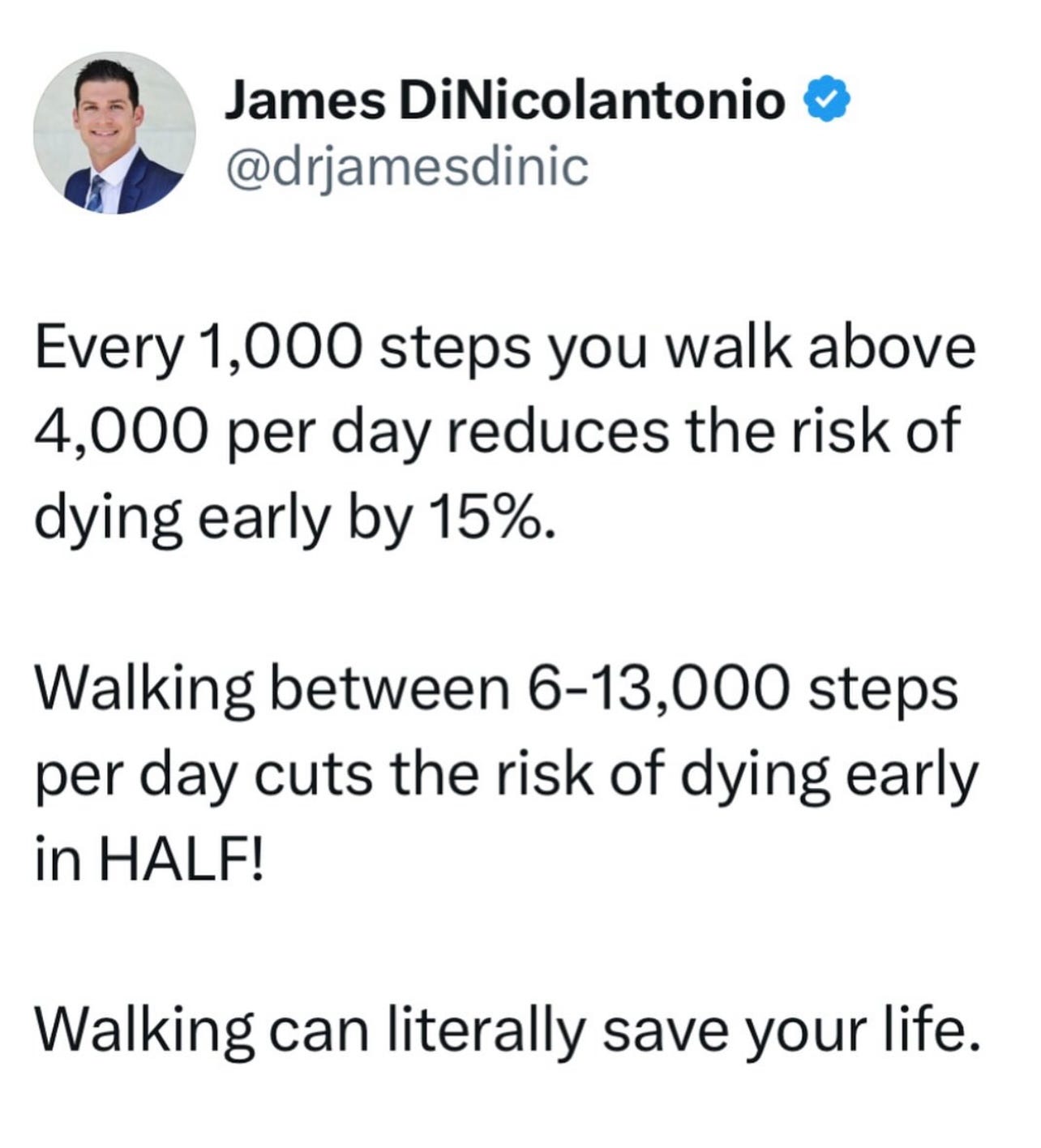I used to wonder why I carry an extra 5-10 lbs in the winter.
“I’m still working out??? I’m not eating terribly??? This sucks.”
I realized a few years ago that in the wintertime, my movement - not my exercise - plummets. Even if I was working out insanely hard, my activity levels in the winter were nowhere near comparable of my activity levels in the spring, summer, and fall.
I’m not saying everyone’s activity levels drop during this time of year, but mine sure did.
Easy fix.
It’s still much easier for me to be active in the summer, but I have totally shifted my movement patterns in the winter and it has made all the difference.
24 hours in the day.
You workout for 1 hour- Okay great wonderful job but what about the other 23?
NEAT is the energy you expend in the day, that is not categorized as exercise.
It’s easy to overlook, but NEAT can be one of the biggest drivers of your daily calorie burn—and more importantly, it plays a massive role in metabolic health.
Think:
Setting an hourly reminder to get up and move (even for 1 minute)
Standing instead of sitting while working on a computer
Walking while taking phone calls or scrolling social media
Doing 10 air squats while cooking
Taking the stairs - always
Parking at the far end of the parking lot
Going on walks with your people
Gardening / yard work
Cleaning
Stretching while watching your show
The list goes on & on…
Support your metabolic health by MAKING MOVEMENT A HABIT!
WALKING = your metabolic superpower
When you walk, your muscles require more energy. This activates a protein called GLUT4 - a glucose transporter found in muscle and fat cells. It moves from inside the cell to the cell’s surface. Once it is at the surface, GLUT4 helps bring glucose from the bloodstream into the muscle cells. This process helps lower blood sugar levels naturally- without insulin.
Simply put: walking supports blood sugar levels.
Dr. Ben Bikman explains this beautifully in his book Why We Get Sick: “Muscle is a metabolic sink. The more you use it, the more glucose it can absorb without insulin.”
Just a few minutes of walking after meals can significantly reduce blood sugar spikes
I wore a glucose monitor for a full month to test this, and it is indeed true. I was so impressed with the power of a walk. What if instead of an hour walk, you went on 6 walks throughout the day, 10 minutes each?
Tip: Opt for an incline walk whenever possible. Walking at an incline increases total calorie burn, improves cardiovascular health, & engages more muscles. (Can be an incredible fat loss tool)
Benefits of prioritizing NEAT
Supports cortisol regulation
Chronic stress = high cortisol = blood sugar imbalances. Gentle movement throughout the day helps regulate the stress response.Improves insulin sensitivity
Dr. Mark Hyman writes, “Movement is medicine—especially when it comes to metabolic health. Frequent movement helps cells respond better to insulin.”Boosts daily calorie burn
Small movements add up over time. You might burn an extra 200–700 calories per day. (Or more!)Reduces risk of mortality
Boosts digestion, mood, and focus
Movement gets your blood flowing to the gut and brain. NEAT is one of the best free tools for daily energy and mood stability.
Albert Einstein said “Life is like riding a bicycle. To keep your balance, you must keep moving.” duh! ;)
You don’t need the most expensive pilates membership, infrared sauna, or personal trainer to change your metabolic health - you just need to move - often and intentionally.
See you Friday!
xoxo
Chloe




My life has been changedddd you’re amazing chlo!!! 💓